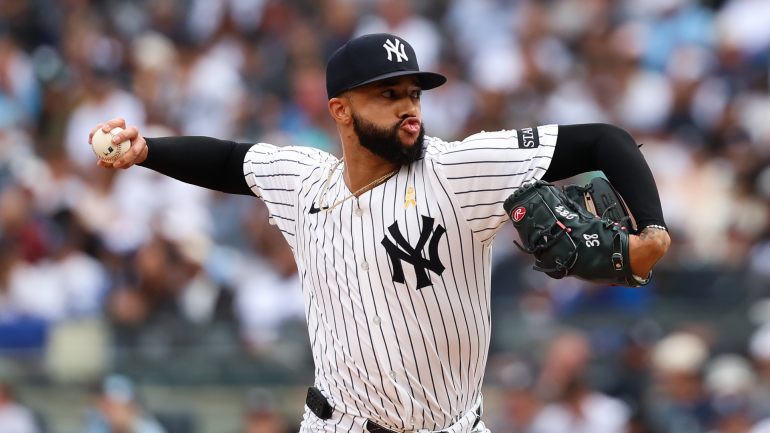Why reliever Devin Williams remains a highly coveted free agent despite his down 2025 season with the Yankees
Williams had a career-worst season in the Bronx but his track record means teams aren't being scared off

Through the earliest stages of Major League Baseball's winter, one thing has become clear: teams aren't too concerned about free-agent reliever Devin Williams' down year. Rather, Williams has been one of the names that has most frequently populated the rumor mill, with several playoff teams (including the Los Angeles Dodgers and Boston Red Sox) being linked to him publicly.
Williams, 31, spent last year with the Yankees after coming over in an offseason trade with the Brewers. Math doesn't work this way, but just to illustrate a point about how uncharacteristic his season was: his 4.79 ERA was greater than the sum of his ERA in his three previous seasons (4.71).
That Williams is nevertheless an in-demand talent speaks to teams' evaluation of his current game and his track record. It also speaks to the disconnect between his surface-level stats and his advanced data, something that CBS Sports noted when ranking him as one of the top 20 free agents available:
"High-Lev Dev" is a strong rebound candidate based on, if nothing else, the incongruity between his ERA and his underlying data. There were 21 pitchers who made 30 or more appearances in 2025 without any starts and who possessed a strikeout rate above 30% and a walk rate below 10%. Williams' 4.79 ERA was the worst of the group, which as a whole put up a 2.76 mark -- to the extent that the next worst ERA was just over 4.00. Williams somehow managed that while sporting the fourth-best hard-hit percentage of the bunch, behind names like Josh Hader and Abner Uribe. Things happen in this game sometimes, particularly with individual relief seasons. There's no compelling reason to think Williams has lost his touch just yet.
So much of player evaluation these days is based on probabilistic analysis and precedent, on identifying the key traits and measures that predict future success. ERA may be one of the most commonly used measures, but it's known to be a largely unreliable gauge -- especially in, say, 50-inning samples.
Besides, there are only two conclusions to draw from the above paragraph: either Williams is still a high-quality reliever who deserved a better season than his baseball card will show, or he's flawed in a massive, yet statistically imperceptible way -- one that never showed up prior to 2025.You can guess which outcome seems more likely.
In turn, you can understand why Williams is a popular target. He, almost without fail, passes all those tests. Even at his worst, he threw strikes and reliably missed bats and barrels. Certainly it's worth examining his failures and exploring why there was such a large gap between his expected and actual results, but the odds are overwhelmingly in his favor of returning to glory.
| Reliever (2023-25) | G | ERA | SO% | BB% | Hard hit% |
|---|---|---|---|---|---|
Edwin Díaz | 116 | 2.48 | 38.4% | 8.6% | 35.6% |
Devin Williams | 150 | 2.47 | 37.2% | 11.1% | 33% |
155 | 4.10 | 24.6% | 7.4% | 40.6% | |
161 | 2.66 | 24.9% | 6.6% | 40.9% | |
156 | 2.89 | 29.2% | 9.8% | 38.7% |
Of course, there's also the financial aspect to consider.
Everyone loves a bargain, and while there's enough interest in Williams' services that it's hard to foresee him coming at a steep discount -- such is the relationship between supply and demand -- the idea of landing him for a few million less than would've otherwise been possible is enticing. That's doubly true when you compare him on a multi-year basis to some of the other top relievers available.
Williams' free agency, then, will be a good test of the limitations of ERA when it comes to projecting future performance.




















